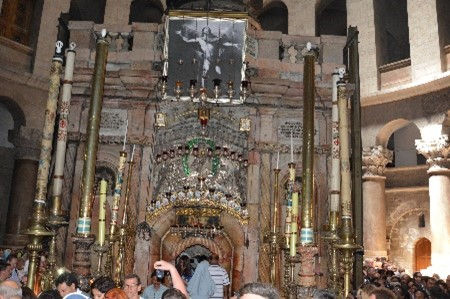Helena van Constantinople the first Pilgrim to the Holy land
- Peter Johan Fontanoza
- Nov 22, 2023
- 3 min read

Helena van Constantinople the first Pilgrim to the Holy land The earliest pilgrims wanted to see the places where Jesus had lived. Helena van Constantinople was the first documented pilgrim to the Holy land. Helena (ca 248- ca.329 AD) also known as Flavia Julia Helena (Augusta) and Saint-Helena was probably born around 248 in a province from what today is known as Turkey. She was the mother of the Roman emperor Constantine the Great. In the year 324 Constantine gave his mother the title of honour Augusta. She became an important figure in the Imperial court which was settled in Augusta Treverorum. (Augusta Treverorum was a city in Belgica Gallia today known as the German city of Trier) Both mother and son converted to Christianity. Around the year 325 AD Helena Travelled to the Holy Land and became the first pilgrim. She stayed several years in the Holy land to visit biblical places; she ordered churches to be build and to give alms to the poor. One of her goals was to find the burial place of Jesus. Constantine ordered in about 326 that the temple to Jupiter/Venus in Jerusalem to be replaced by a church. After the temple was torn down, its ruins removed, the soil was removed from the cave, revealing a rock-cut tomb that Helena and Macarius (Bishop of Jerusalem) identified as the burial site of Jesus. A shrine, in the form of a rotunda was built on the site of the tomb. There is a legend that Helena found, above the cave 3 crosses. One of them could be the cross on which Jesus was crucified. To test which of these crosses belonged to Jesus, they took a leper at the outskirts of Jerusalem and brought with to the site of Golgotha. Golgotha was the place of Jesus’ crucifixion. The leper was ordered to touch each of the crosses one by one. He touched the first one and nothing happened. He touched the second one and nothing happened. When he touched the 3 rd cross the leper was instantly healed. Because of the 3 rd cross healed the leper it is known as “The True Cross.” Helena brought parts of the cross to Constantinople, other part of the cross given in the hands of the bishop of Jerusalem. In a second stadium the Church of the Holy Sepulchre was built over the rotunda and Golgota. Helena also travelled around 226 to the ruins of Bethlehem to see the “Cave of the Nativity” where Jesus was born as told in the Gospels of Mathew and Luke. She ordered to build over the so called “Grotto” the first church in the form of a basilica. The church of the Nativity is one of the oldest churches in the world. The Basilica was dedicated on

May 31, 339. Constantine the Great visited his mother in Jerusalem to see with his own eyes what she found and build. They travelled together to Bethlehem. Helena died shortly after coming back home from the Holy Land at the age of ca. 80 years old. Motivated by popes and church leaders thousands of pilgrims followed in her footsteps. They wanted to see what Helena and her son, had built in the 4th century to house the holy sites during his Reign. In the 6th century probably in 529, during the Samaritan revolts the basilica was destroyed by a big fire. During the reign of emperor Justinian (527-565) the Basilica was rebuild. He preserved the original character of the building and added a porch, replaced the octagonal sanctuary with a cruciform transept with 3 aspis., with an atrium and a basilica consisting of a nave with four side aisles. The Crusaders repaired, with permission and financial help the from the Byzantine emperor the basilica and added addition



Comments